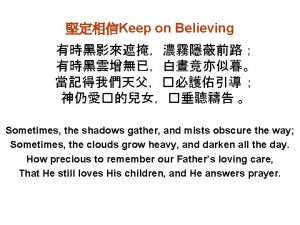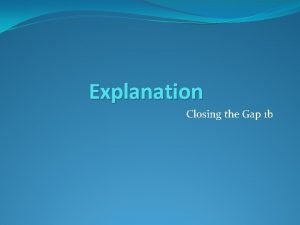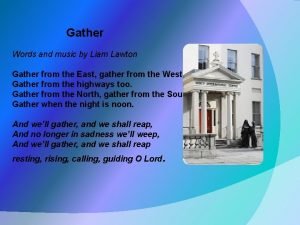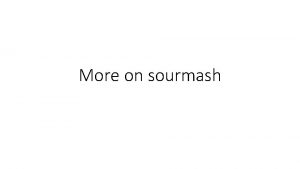L O Gather information and create an explanation







- Slides: 7

L. O. Gather information and create an explanation text.

Grammar and Punctuation

• Today we are going to be investigating carnivorous plants (plants that eat meat). • First we have an example of a text that describes the Pitcher plant.

What is looks like Wide rim causes the prey to fall Into the plant. Where it lives This report explains how the plant catches its prey. Deadly stomach juices inside the Pitcher dissolve its prey.

Read this information about the Venus Fly Trap.

Can you organise this information into a report using sub headings? (Look back at the Pitcher Plant example to help) Make sure you explain how the plant traps its prey. The Venus flytrap is a carnivorous plant (a plant that feeds on small animals, such as insects). Carnivorous plants grow in soil that has little nitrogen. They get nitrogen from the insects they trap. The Venus flytrap is one of a very small group of plants that can snap shut very quickly. When an insect or spider crawls along the leaves and touches a hair, the trap closes only if a different hair is touched within twenty seconds of the first touch. The two-touch trigger means that little energy is wasted on things that are not food. The Venus flytrap is a small plant, with small leaves. Its clam-shaped leaves look rather like flowers, and so they attract insects. When they are open, they are red and smell sweet. They have stiff hairs on each edge. Inside the leaves, there are very sensitive, tiny hairs which cause the leaves to snap shut when they are touched. Two hairs must be touched to make the leaves close. This makes it more likely that the thing that touched its hair is living. The Venus flytrap feeds on insects, such as ants, beetles, woodlice, worms, flies, grasshoppers, and moths. First it traps the insect inside its leaves, and then lets out a liquid that helps digest the trapped animal. The plant consumes the insect and takes the nitrogen from the insect's body. The Venus flytrap makes sugar by photosynthesis. The insects give it nutrients which it cannot get from the waterlogged soil. With the nutrients it can build up enzymes and other molecules which need trace elements as well as sugars and amino acids. The Venus flytrap can only be found wild in certain areas of North and South Carolina in the United States. Most of its habitat is near the coast. The Venus flytrap lives in boggy areas (low-lying places with wet, soggy soil). In addition, while this species prefers to grow in full sunlight, it can also survive underwater.

Venus Fly Trap Appearance Habitat Trap













